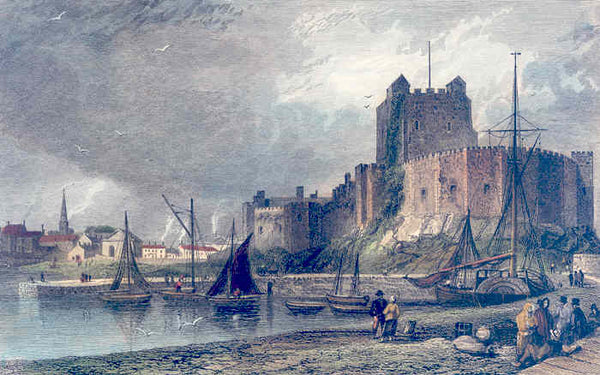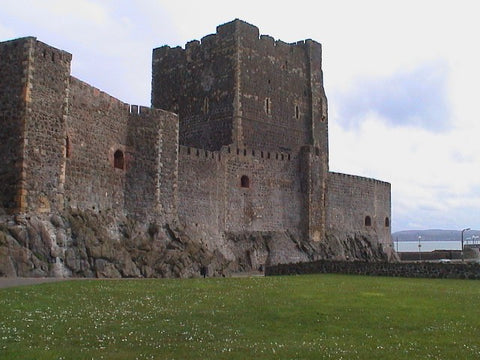Castle Spotlight, Carrickfergus Castle, Ireland

The Castle stands on a rocky peninsula 30 feet high and is surrounded by water on three sides. The keep is ninety feet high with walls nine feet thick, making this a most imposing and formidable castle. In 1210, after John De Courcy had died, Carrickfergus Castle was captured by King John. In 1216, after King John's reign, the second building phase to improve the castle started. The keep was raised to its present height and a second set of walls, now called the Middle Ward, was built. Only foundations of these walls remain at present.
A third phase of building took place between 1226 and 1242 when the castle and the region were under the rule of another Anglo Norman lord, Hugh de Lacy. The walls were extended to encircle the whole of the rock the castle stood on. This area is now called the Outer Ward. The entrance to the Outer Ward was guarded by a strong gate house formed by 2 large circular towers. During the Edward Bruce invasion the English retreated to Carrickfergus and the castle fell to the Scots in September 1316, after a year's siege.
In the early 1600's Carrickfergus Castle was updated for artillery. The round towers of the gate house were lowered by half and transformed in the present D-shape amongst other improvements. However, by 1689 the castle had fallen into disrepair and was easily captured by General Schomberg in 1690. His leader, William of Orange, landed at Carrickfergus on June 14, 1690, bringing with him an army made up largely of foreign mercenaries. His force included the Dutch Blue Guards, two regiments of French Huguenots, some English and Scots, and contingents of Danish, Prussian, Finnish, and Swiss mercenaries totaling about 35,000 men.
In 1760 Carrickfergus briefly fell into the hands of the French under the command of Francois Thurot. They looted the castle and town and then left. In 1797 the castle became a prison and in the early 1800's, under the threat of a possible French invasion, its defenses were considerably strengthened with 22 cannons. Until 1928 Carrickfergus Castle was used as a magazine and armory and during WW II it served as an air raid shelter. Today it is maintained by the Northern Ireland Environment Agency and can be visited for a small fee.












